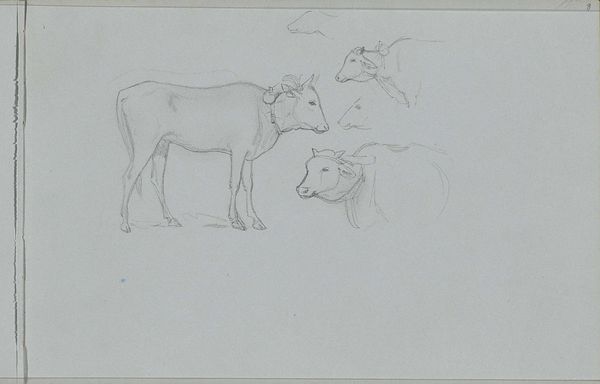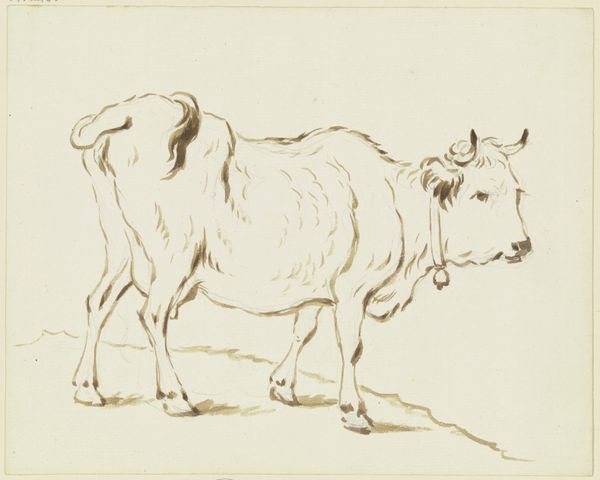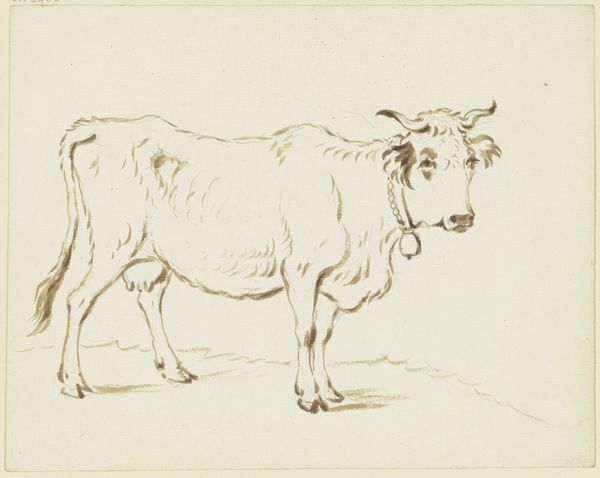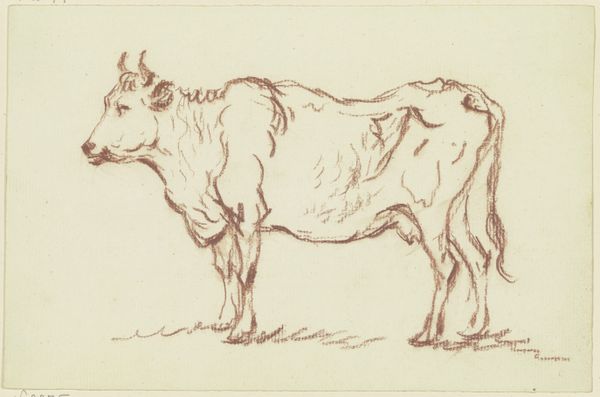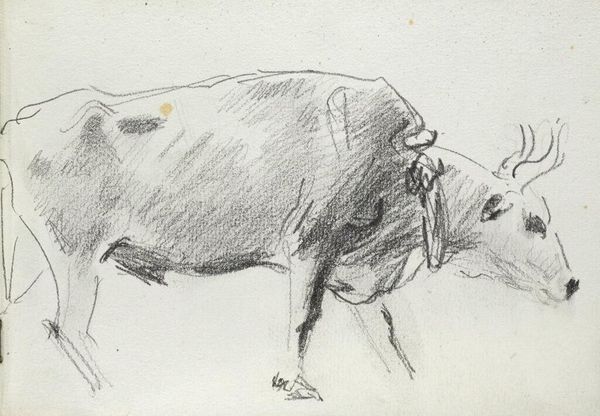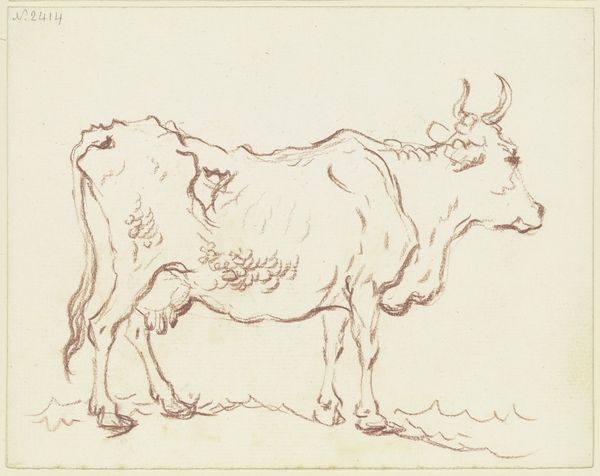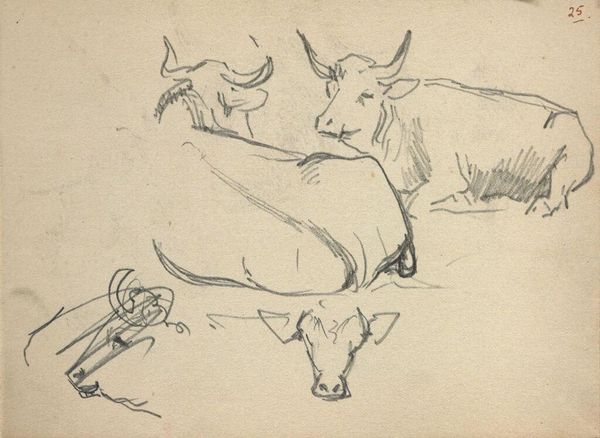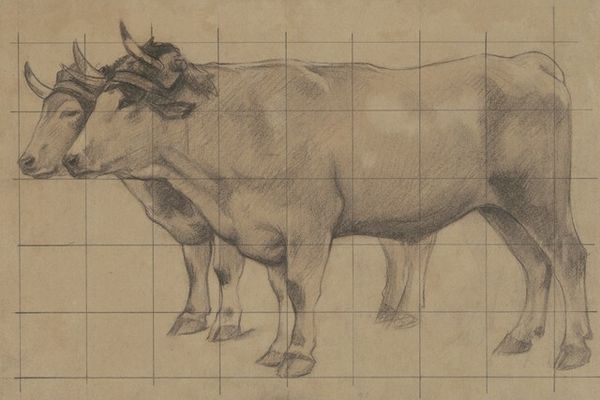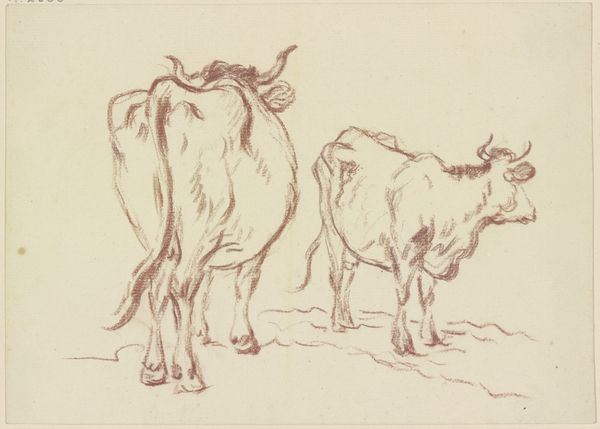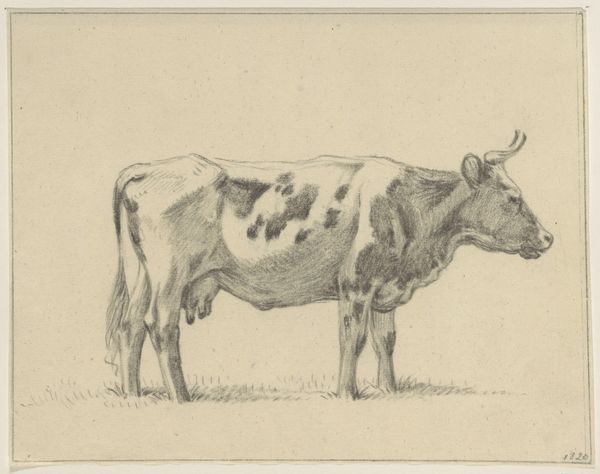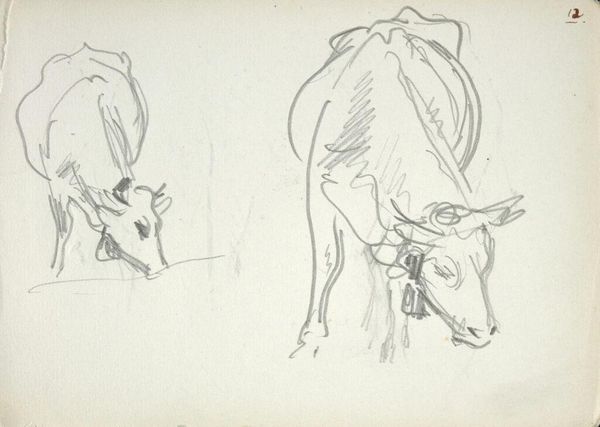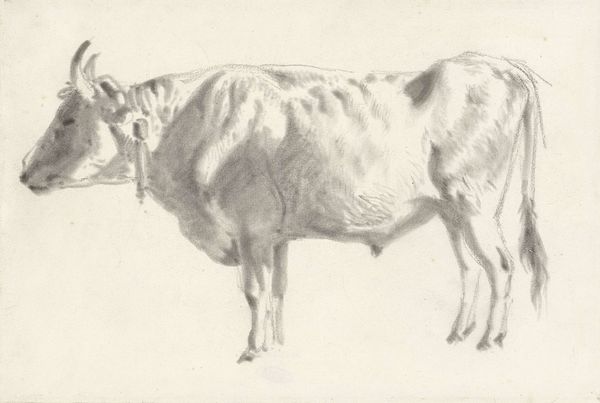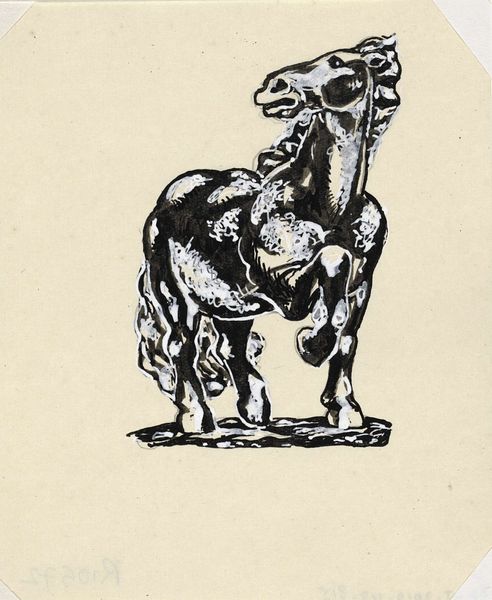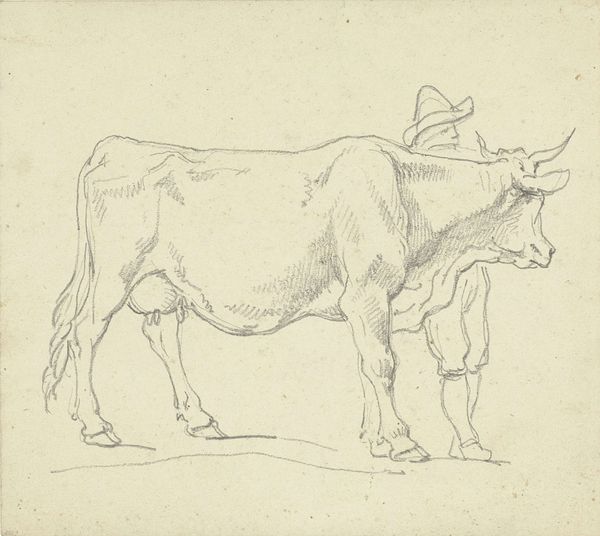
drawing, ink
#
drawing
#
animal
#
dutch-golden-age
#
pen sketch
#
figuration
#
ink
#
line
Dimensions: height 71 mm, width 114 mm
Copyright: Rijks Museum: Open Domain
Curator: Gerrit Willem Dijsselhof’s "Twee Koeien", or "Two Cows," drawn sometime between 1876 and 1924, rendered in delicate pen strokes of ink. I’m immediately struck by how tender this sketch is. There’s a starkness to the line work but something quite vulnerable too. Editor: The austerity of the drawing is immediately apparent. It’s stripped back, minimalist almost. But placing it in its possible historical moment is interesting, particularly when one considers Dutch art history’s problematic relationship with pastoral romanticism. Curator: Absolutely. Dijsselhof simplifies, almost to the point of abstraction. The ribs of the larger cow are pronounced. There's no prettification here; it's reality. A stark observation of the agricultural world that, perhaps, resists idealization? Editor: Yes, there’s a kind of unvarnished truth to it. Look, depictions of rural life have frequently served as a convenient form of cultural nationalism, even outright propaganda in some cases, celebrating a whitewashed ideal of agrarian life that conceals real socioeconomic disparities. Do you see a resistance to that here? I’m not sure, it's a tough call with such a seemingly simple sketch. Curator: I suppose I resist boxing it in! Perhaps its very lack of embellishment is its statement. The quiet dignity in the posture of the larger cow as the calf nudges near—it feels like observing a lived moment, not manufacturing a symbol. Editor: And yet, the simplicity itself flirts with symbol. Line drawings tend to function as a way of reaching into and marking form, suggesting presence without actually creating volume and shadow. By distilling these cows to their barest outlines, doesn’t Dijsselhof open them up to a range of interpretations, conscious or not? What *is* a cow in the late 19th, early 20th century imagining of Dutch identity? What does its form convey, as labor, as nourishment, as an organic element? Curator: Oh, I love that. And Dijsselhof was immersed in Symbolism and later in the decorative principles of the Dutch Nieuwe Kunst movement... He sought pure form. These cows become vessels of meaning, shaped as much by cultural perception as by literal representation. So, in a way, we're both right! Editor: An image seemingly straightforward gives rise to unexpected nuance. Makes you rethink everything you assume about cows, doesn't it? Curator: Exactly!
Comments
No comments
Be the first to comment and join the conversation on the ultimate creative platform.
